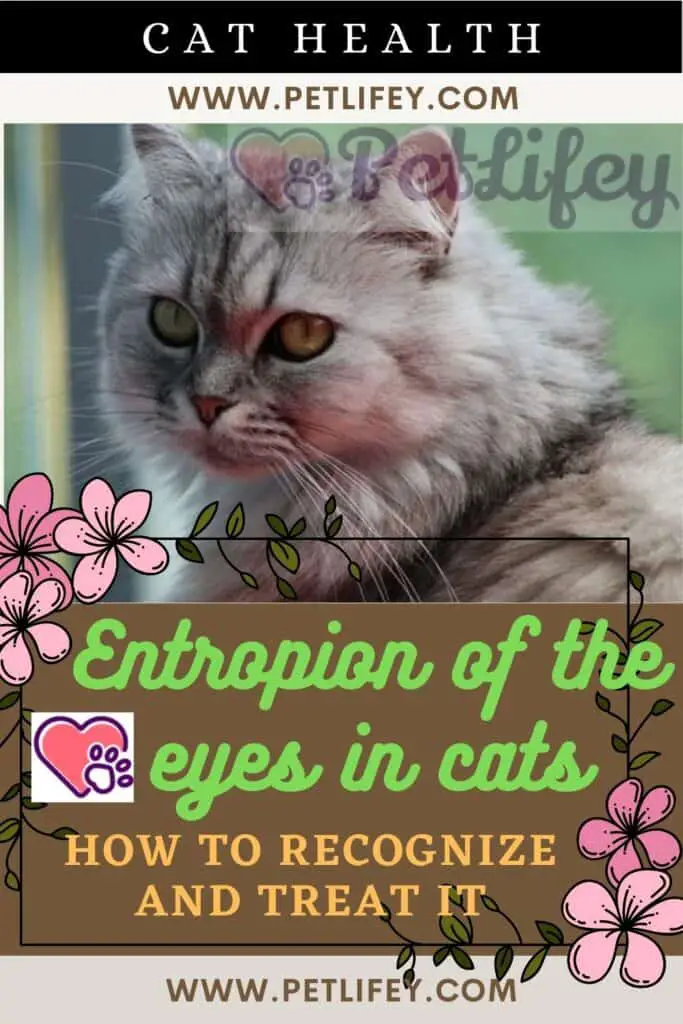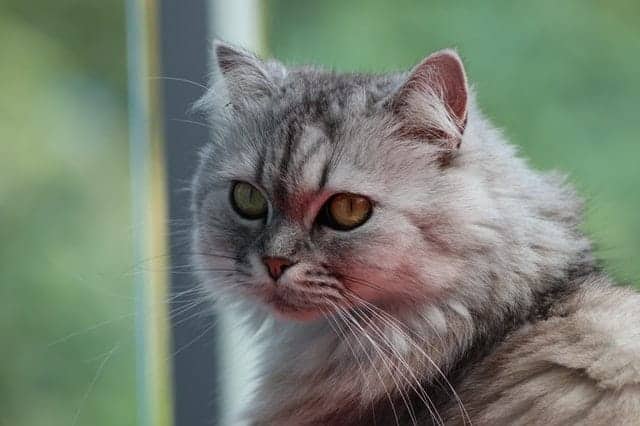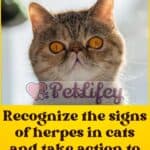
A genetic disease of pets is entropion, which can occur in the eye of our cat if his eyelid is bent inwards.
Cats suffering from entropion have a genetic condition whereby part of the eyelid of their eyes is bent towards the eyeball. Instead of protecting the eye, therefore, the eyelid scratches and irritates its surface. But how to recognize and intervene correctly to solve this problem, before our cat can also lose his sight? Let’s find out together.
Recognize the symptoms of entropion
To recognize the presence of entropion in the eyes of our cat, we must look for abnormalities in its eyelids.
Since this disease is a condition in which the eyelids are turned inwards, the eyelashes will be turned towards the eyeball.
In severe cases the hairs can then rub on the surface of the cat’s eye. And it can affect from one to all four of his eyelids.
We must be careful of irritated or sensitive eyes, because once the eyelid is facing the eye, it will begin to irritate its surface.
Possible symptoms of this condition include:
- Reddened eyes
- Sensitivity to light
- Excessive tearing
- Strabismus
- Liquid production
- Spots on the hair around the eyes
- Sores on the eyes (corneal ulcers)
Which cats are affected
Brachycephalic cats are usually more affected, such as Persians. These breeds, due to the different structure of the skull, are more likely to have genetic entropion.
If we have a cat belonging to one of these breeds, we should be especially careful to look for signs of this condition.
Cats that do not have the crushed face of the brachycephalic breeds are usually more likely to have drooping eyelids, instead of bent inside.
Entropion also occurs very often at the birth of brachycephalic cats, so we should check the state of their eyes already at birth.
In these cases, the condition has strictly genetic reasons, and we will not be able to prevent it in any way. But we must in any case be very careful.
Newborn kittens should open their eyes within 4 to 5 weeks of birth. If they don’t, we should seek advice from a veterinarian.
Even the adult cat, if brachycephalic, could develop entropion after a chronic eye infection. For example, as with conjunctivitis, especially if with repeated attacks.
Ask your veterinarian for a diagnosis
If we notice an abnormality in our cat’s eyelids, we should immediately take them to visit our trusted veterinarian.
If its eyelid is extremely infected and swollen, and the cat seems to suffer and be very sick, we should intervene promptly.
When we take the cat to visit, we should inform the veterinarian of all the symptoms we have noticed. In this way, it will be easier to make a diagnosis.
Your doctor might perform a series of tests to assess what the correct treatment is for your cat. Among them, the evaluation of the production of tears, and one for any eye infections.
They are usually necessary controls to fight infections, and treat eyelids that are abnormal. Our cat, without proper care, may also lose its sight.
How to treat entropion

There are various possible preliminary treatments that we can perform on the cat suffering from entropion, before moving on to surgical solutions.
Any underlying infections should be treated first, usually with antibiotics. We can also use artificial tears to improve eyelid movement.
For each treatment, we must absolutely first seek advice from our veterinarian. Each type of care depends on the severity of the cat’s condition.
Cats with severely bent eyelids may need immediate surgery.
In less severe cases, however, eliminating any eye infections can return the cat’s eyelids to normal.
In the event that we have to resort to surgery, it will serve to fold the eyelid outwards and remove excess skin, so that it remains in the correct position.
If our cat has a very severe case of entropion, the veterinarian will probably resort to this procedure or refer us to a veterinary ophthalmologist.
Even after surgical correction, in any case, there may be spasms and infections in the eyes. For this reason, it will always be necessary to keep the cat’s eyes under control.
After treatments (surgical or not), our cat will need care. Above all, we must prevent you from touching your eyes (we use a cone collar, for this).
In addition, you will have to follow a cure with medications prescribed by your veterinarian. Follow it carefully, as well as the one for the stitches after surgery.
Dressings typically need to be changed regularly, and wounds from surgeries need to be checked and cleaned to avoid infection.






